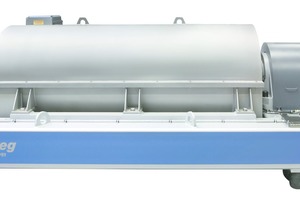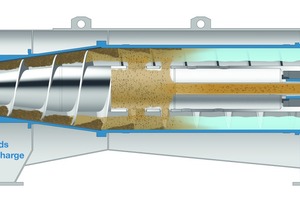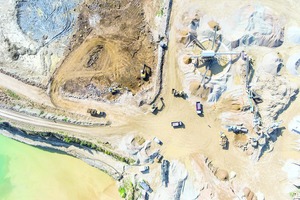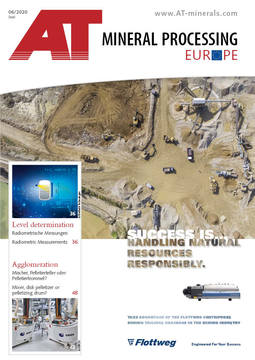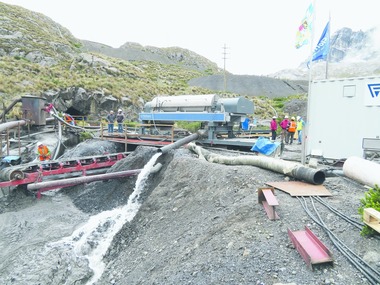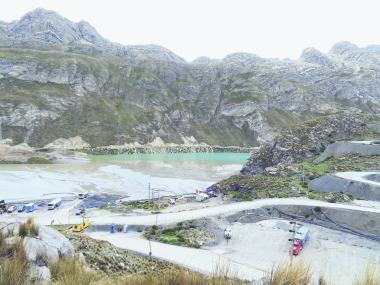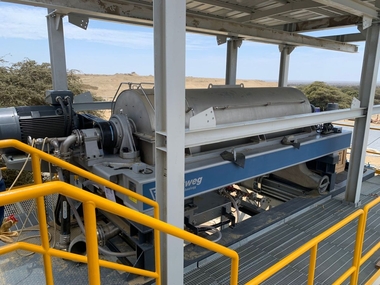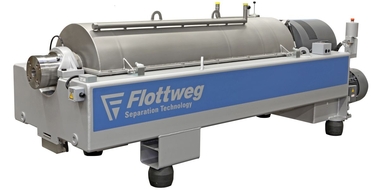Optimal dewatering of overburden sludge using centrifuges
To obtain valuable minerals, mining companies move large quantities of rock. They must first be milled and in most cases treated with chemical solutions followed by the addition of large quantities of water. As the concentration of recyclable materials decreases, the proportion of overburden sludge increases. The tailings, which are partly still contaminated with chemicals, are pumped into large sludge ponds. The pools are usually secured by earth walls. During mine operation, they must be stable enough to withstand the pressure of the stored waste material. Unfortunately, this is not always the case. The dam of the waste water pond of an iron ore mine in Brumadinho, near the city of Belo Horizonte, burst on January 25, 2019. This resulted in the deaths of 270 people.
This method of storage is still widespread, but involves enormous risks to the environment because it binds the used process water. On top of this, there are enormous costs associated with monitoring dam stability and investigating groundwater pollution.
An alternative to this storage is the so-called dewatered storage. Dewatered overburden sludge is deposited on the earth’s surface. This disposal method resembles a modern sealed landfill. This method requires considerably less space, is significantly safer and returns the used process water directly into the cycle. This method is clearly preferred especially in places that are difficult to reach or cramped with a high earthquake risk. In addition, many operators face the challenge that the amount of fresh water available in the mining regions is only partially sufficient and because this severely affects operating costs.
Storage of dewatered tailings is gaining ground
Due to economic considerations and pressure from many governments, the practice of storing dewatered waste is becoming increasingly popular. There are different methods available to accomplish dewatering: Besides chamber filter presses and belt presses, the centrifuge has become more and more important in recent years. Centrifuges, and in particular decanters, simultaneously offer several benefits.
Reduced space requirement - Save space, save money
As in other industries, the space available is always limited. Dewatering of tailings in a decanter separates solid-liquid mixtures by means of high centrifugal forces and in comparison with other dewatering technologies, this is done within a small area.
A Z92 optimized for mining can be installed within an area of 5 x 10 m. This machine offers a dry substance value of 60 – 75 % w/w at a throughput rate of up to 30 t/h. The decanter centrifuge thus offers the highest capacity per unit area. The compact design generally makes it possible to carry out the tailing treatment directly at the location where the tailings are created. The system can be installed either as fixed installation or as a mobile container system. For other technologies such as chamber filter presses or thickeners, a sufficiently large foundation must be available which requires an appropriate investment and sufficient space.
Recovery of process water
There is already a shortage of water in many regions of the world. This trend will strengthen as global temperatures rise. Particularly in mining, which is often conducted in very dry regions, process water is a rare and valuable commodity. Operators are therefore forced to reduce their water consumption. Vast quantities of process water are captured in tailing ponds or tailing lagoons used by many mine operators. Flottweg has developed special decanter centrifuges for dewatering tailing ponds in order to reuse this process water.
Using a machine with a dewatering efficiency of 60 – 75 % w/w and a throughput capacity of 25 – 40 t/h, clear recyclable process water can be recovered with a turbidity between 30 and 50 NTU.
The centrifuge offers clear benefits
Centrifuges are often subject to false prejudices. And they are criticised as being very susceptible to wear and tear. In addition to this there is the widespread prejudice that centrifuges are power-hungry machines. Flottweg has deployed machines in the mining industry for many years now, all of which have declared war on these prejudices.
Wear protection against abrasive media
Mechanical separation of liquids and solids with decanter centrifuges requires high forces. Abrasive materials or media with corrosive properties cause wear, tear and attrition. Flottweg has therefore developed a special wear protection system which guarantees that the decanter centrifuges have a long service life and at the same time substantially reducing service and maintenance costs.
Low energy consumption
The argument that decanter centrifuges are power-hungry is obsolete. While this reservation was true for machines from the 1970s or 1980s, technological evolution has brought about massive advances within the industry. Of course, Flottweg’s largest decanter centrifuge, the Z92, is equipped with large electric motors. However, these are only run under full load during start-up and when extremely viscous suspensions are encountered. As a rule, the machine is driven at a constant velocity, comparable to an automobile cruising along a country road at 80 km/h.
Summary
The use of centrifuges is an excellent way to dewater overburden sludge or tailings. Costly process water can be returned to the process within a very short time. The addition of fresh water can be reduced to a minimum. At the same time, the probability of a dam bursting is eliminated, which considerably reduces the burden on both people and the environment. Dewatering with centrifuges requires less fresh water and supervision and they are more cost-effective. Centrifuges are also significantly smaller, which facilitates their use in difficult to access areas.
//www.flottweg.com" target="_blank" >www.flottweg.com:www.flottweg.com

